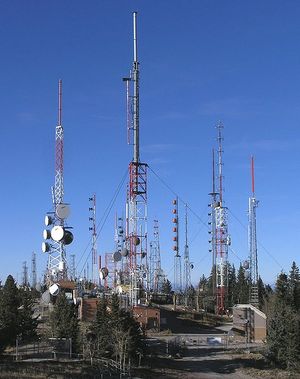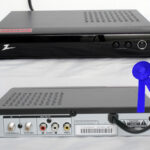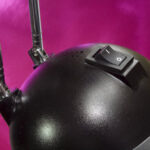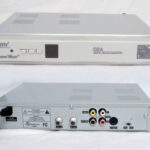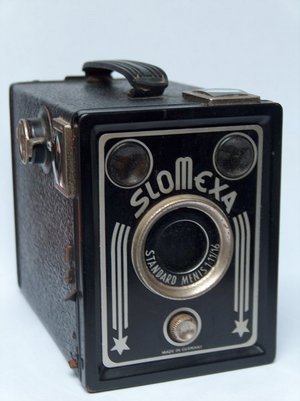HD Radio is a new way to broadcast radio programming. It is a proprietary digital protocol invented by Ibiquity Digital Corporation. The HD Radio technology allows radio broadcasters to send a digital signal over the same frequency that they are using for their regular analog radio broadcast. Because analog radio receivers can only interpret analog signals, they continue to operate as if the digital signal did not exist. Similarly, HD Radio’s digital signal can be decoded by digital receivers.
No Static At All with HD Radio
HD Radio technology solves the problem of static that can exist in analog radio playback when there is interference, a weak signal, or reflected or echoed analog radio signals bouncing off nearby obstructions. As long as the digital bits reach the receiver, they will be reassembled into a clear, crisp audio signal by the digital decoder. However, if the HD Radio signal is so weak, or is drowned out by strong interference, then instead of static, the listener will experience dropouts or patches of silence. The threshold for this, however, is higher than the threshold for static in an analog radio signal, so, in theory, it should happen less often.
Multiple Stations at Each Frequency
Another benefit of the digitally encoded radio signal is that much more information can be packed into the same bandwidth that is used for an analog radio broadcast. This means that, using HD Radio technology, a radio broadcaster can actually send three separate radio programs out simultaneously, over the same radio frequency, while continuing to send the analog radio signal as well. The second and third programs are called the HD2 and HD3 stations even though they all coexist in the same frequency band as a single analog radio station. HD Radio receivers allow listeners to not only tune between frequencies like an ordinary radio, but also allow them to select the primary radio station, the HD2 signal, or the HD3 signal.
HD Radio’s Digital Monopoly
Ibiquity’s HD Radio technology is currently the only FCC licensed digital radio broadcast protocol in the United States. That means that if broadcasters want to take advantage of the ability to offer these secondary stations, they must license the HD Radio technology from Ibiquity.
HD Radio Billed as Satellite Radio Killer
I was working in new product development at a major consumer electronics company when HD Radio was introduced. At the time, satellite radio was making headlines and many radio broadcasters feared that traditional radio was going to lose market share to satellite radio. HD Radio was marketed to them, essentially as a satellite-radio killer. If broadcasters could match the diverse and unique content of satellite radio using the HD2 and HD3 channels of HD Radio, then it would be hard for consumers to justify paying a subscription fee for satellite radio, the popular thought went. It is doubtful, however, that breaking the radio audience into smaller and smaller chunks is a good thing for radio broadcasters financially since they rely on the appeal of reaching a large audience to attract advertising dollars.
HD Radio Sounds Better
Radio broadcasters can also offer higher fidelity with digital signals. Ibiquity claims that AM radio stations can offer FM quality sound, while FM stations can offer CD quality sound when they use HD Radio technology. The difference in audio quality is quite audible to the average listener, particularly on the AM side.
Slow Consumer Adoption
In the end, our new product development team did not believe the adoption rate of HD Radio by consumers would be steep enough, despite a massive HD Radio marketing campaign by the HD Digital Radio Alliance, that we needed to include an HD Radio receiver in our home audio product line at that time. It would have meant licensing the HD Radio technology from Ibiquity since the technology is proprietary.
Effective Range Limitations
One noticeable difference between analog and digital radio comes at the extreme edges of radio reception areas. For example, if you drive away from an analog radio station while listening to the broadcast, the signal gradually gets weaker, gaining static and other audible interference as you go. With digital radio broadcasts this doesn’t happen; either your HD radio receiver gets the digital information to decode or it doesn’t. When the signal gets weak enough so that some of the information no longer reaches the receiver, the signal simply drops out altogether. When it’s right on the edge, you may get some staccato off and on behavior as it momentarily drops out and then comes back. Because analog radio may still be quite listenable with a bit of interference or fade, it generally has a longer useful range than the digital broadcast. In other words, you are able to listen to analog radio at a greater distance from the broadcast station than you could with HD Radio under normal conditions.
Ibiquity Plans Phase Out of Analog Radio
At present, many radio stations are simulcasting their analog radio broadcast in HD Radio. A large number are also taking advantage of the availability of HD2 and HD3 radio stations to offer additional programming to HD Radio listeners. Ibiquity’s plans call for the eventual transition to only digital radio broadcast and the elimination of analog broadcasts altogether, although there is no clear timetable for this to happen at present. If analog broadcasts where to disappear, Ibiquity says, digital radio could use the bandwidth for additional features such as more stations or even surround sound options.
